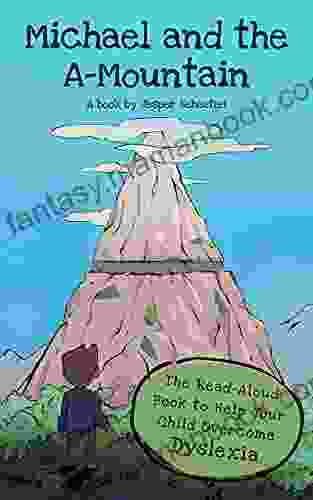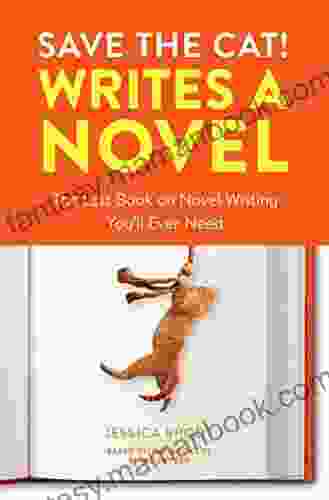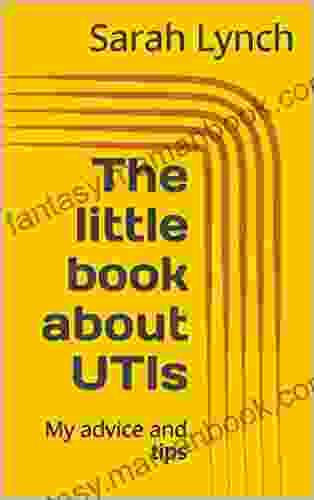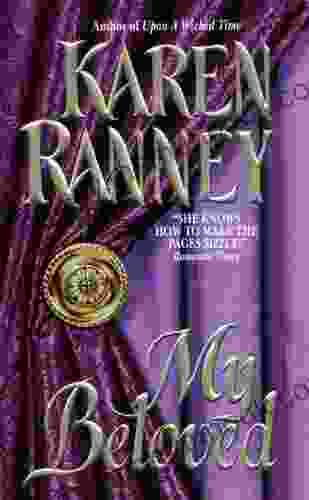Unlocking Literacy: The Power of Read Aloud for Dyslexic Children

4.6 out of 5
| Language | : | English |
| File size | : | 17410 KB |
| Text-to-Speech | : | Enabled |
| Screen Reader | : | Supported |
| Enhanced typesetting | : | Enabled |
| Word Wise | : | Enabled |
| Print length | : | 136 pages |
| Lending | : | Enabled |
| X-Ray for textbooks | : | Enabled |
Dyslexia, a neurological disorder that affects reading, writing, and spelling, can pose significant challenges for children. However, the power of read aloud can be a transformative force, unlocking their literacy potential and paving the way for a successful learning journey.
Understanding Dyslexia
Dyslexia is a specific learning disability that affects the brain's ability to process language. Children with dyslexia may struggle with:
- Phonological awareness: Identifying and manipulating the individual sounds in words.
- Decoding skills: Translating letters into sounds and blending them into words.
- Fluency: Reading smoothly and with ease.
- Comprehension: Understanding the meaning of what they read.
The Transformative Power of Read Aloud
Read aloud offers a multisensory approach to literacy, engaging the child's visual, auditory, and kinesthetic senses. By hearing the language flow, seeing the words on the page, and feeling the rhythm of the story, children with dyslexia can develop a stronger understanding of its structure and sounds.
Moreover, read aloud:
- Enhances phonological awareness: The repetition of words and phrases helps children recognize and manipulate individual sounds.
- Improves decoding skills: The visual and auditory input helps children associate letters with sounds, making it easier for them to decode unfamiliar words.
- Builds fluency: The rhythmic nature of read aloud encourages children to read smoothly and naturally.
- Fosters comprehension: The discussion and exploration that accompanies read aloud helps children develop a deeper understanding of the story's meaning and characters.
Strategies for Effective Read Aloud
To maximize the benefits of read aloud for dyslexic children, consider the following strategies:
- Choose engaging texts: Select books that are interesting and appropriate for the child's reading level. Look for stories with clear and simple language, engaging characters, and a positive message.
- Preview the text: Before reading aloud, briefly introduce the story and discuss any unfamiliar words or concepts. This will help the child build background knowledge and make the reading experience more meaningful.
- Highlight important words: Use a highlighter or different color ink to emphasize key words and phrases. This helps the child focus on the important parts of the text.
- Allow for repetition: Don't hesitate to reread passages or sections that the child may need to hear multiple times.
- Encourage participation: Engage the child in the reading process by asking questions, discussing the characters, and making predictions.
- Model fluent reading: Read aloud with fluency and expression. This demonstrates how the language should sound and helps the child develop a sense of rhythm.
Inspiring Stories
The power of read aloud for dyslexic children is evident in countless success stories:
Read aloud is an essential tool for helping dyslexic children overcome their challenges and reach their full literacy potential. By engaging the child's senses, improving phonological awareness, and building fluency, read aloud can transform the learning journey and unlock a world of literary possibilities. Embrace the power of read aloud and empower your dyslexic child with the gift of literacy.
4.6 out of 5
| Language | : | English |
| File size | : | 17410 KB |
| Text-to-Speech | : | Enabled |
| Screen Reader | : | Supported |
| Enhanced typesetting | : | Enabled |
| Word Wise | : | Enabled |
| Print length | : | 136 pages |
| Lending | : | Enabled |
| X-Ray for textbooks | : | Enabled |
Do you want to contribute by writing guest posts on this blog?
Please contact us and send us a resume of previous articles that you have written.
 Top Book
Top Book Novel
Novel Fiction
Fiction Nonfiction
Nonfiction Literature
Literature Paperback
Paperback Hardcover
Hardcover E-book
E-book Audiobook
Audiobook Bestseller
Bestseller Classic
Classic Mystery
Mystery Thriller
Thriller Romance
Romance Fantasy
Fantasy Science Fiction
Science Fiction Biography
Biography Memoir
Memoir Autobiography
Autobiography Poetry
Poetry Drama
Drama Historical Fiction
Historical Fiction Self-help
Self-help Young Adult
Young Adult Childrens Books
Childrens Books Graphic Novel
Graphic Novel Anthology
Anthology Series
Series Encyclopedia
Encyclopedia Reference
Reference Guidebook
Guidebook Textbook
Textbook Workbook
Workbook Journal
Journal Diary
Diary Manuscript
Manuscript Folio
Folio Pulp Fiction
Pulp Fiction Short Stories
Short Stories Fairy Tales
Fairy Tales Fables
Fables Mythology
Mythology Philosophy
Philosophy Religion
Religion Spirituality
Spirituality Essays
Essays Critique
Critique Commentary
Commentary Glossary
Glossary Bibliography
Bibliography Index
Index Table of Contents
Table of Contents Preface
Preface Introduction
Introduction Foreword
Foreword Afterword
Afterword Appendices
Appendices Annotations
Annotations Footnotes
Footnotes Epilogue
Epilogue Prologue
Prologue Eli Saslow
Eli Saslow National Center For Montessori In The Public...
National Center For Montessori In The Public... Simon Martin
Simon Martin Ethan Kross
Ethan Kross Jim Ewing
Jim Ewing Kyla Stone
Kyla Stone K J Simpson
K J Simpson Sarah Holland Batt
Sarah Holland Batt Sonia Pilcer
Sonia Pilcer Angus Donald
Angus Donald Cullen Bunn
Cullen Bunn Milad R K
Milad R K Pie Corbett
Pie Corbett Kimberley Kleczka
Kimberley Kleczka Robyn Vandersys
Robyn Vandersys Margery Williams
Margery Williams Anthony Horowitz
Anthony Horowitz Dana Levin
Dana Levin David Harvey
David Harvey Rachel Oates
Rachel Oates
Light bulbAdvertise smarter! Our strategic ad space ensures maximum exposure. Reserve your spot today!
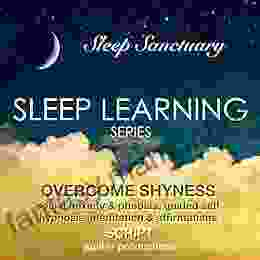
 Neil GaimanUnlock Your Potential: Transform Your Life with Sleep Learning, Guided Self...
Neil GaimanUnlock Your Potential: Transform Your Life with Sleep Learning, Guided Self...
 Darren NelsonUnveiling See Pattern Here: A Comprehensive Guide to Revolutionizing Image...
Darren NelsonUnveiling See Pattern Here: A Comprehensive Guide to Revolutionizing Image... Eddie BellFollow ·15.9k
Eddie BellFollow ·15.9k Yasunari KawabataFollow ·2.4k
Yasunari KawabataFollow ·2.4k Jonathan FranzenFollow ·17.1k
Jonathan FranzenFollow ·17.1k Luke BlairFollow ·14k
Luke BlairFollow ·14k Glen PowellFollow ·16.5k
Glen PowellFollow ·16.5k Eli BrooksFollow ·3.3k
Eli BrooksFollow ·3.3k Houston PowellFollow ·14.6k
Houston PowellFollow ·14.6k Gene PowellFollow ·9.8k
Gene PowellFollow ·9.8k
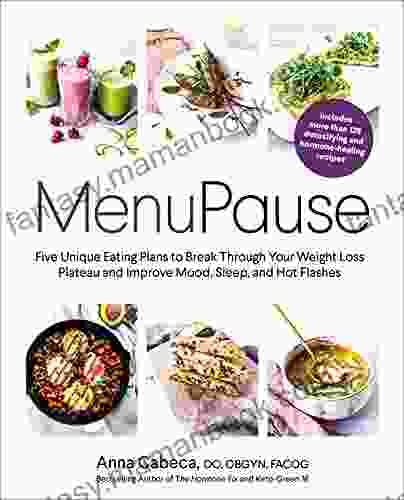
 Roland Hayes
Roland HayesFive Unique Eating Plans to Shatter Your Weight Loss...
Weight loss journeys can be a rollercoaster...
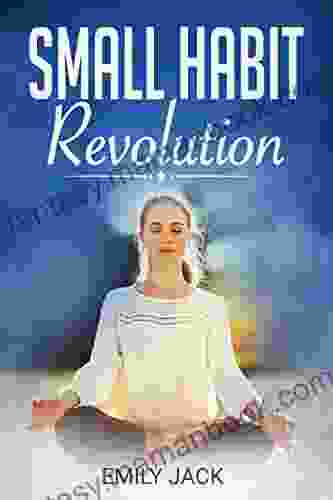
 Gustavo Cox
Gustavo CoxThe Small Habits Revolution: How Tiny Changes Can...
Are you ready to...

 Herman Mitchell
Herman MitchellVisit Alook Cool Place In Outer Space Let Explore The...
Welcome to the World Series...

 Hassan Cox
Hassan CoxGaunt's Ghosts Omnibus: A Comprehensive Guide to the Epic...
Prepare to embark on an...
4.6 out of 5
| Language | : | English |
| File size | : | 17410 KB |
| Text-to-Speech | : | Enabled |
| Screen Reader | : | Supported |
| Enhanced typesetting | : | Enabled |
| Word Wise | : | Enabled |
| Print length | : | 136 pages |
| Lending | : | Enabled |
| X-Ray for textbooks | : | Enabled |


